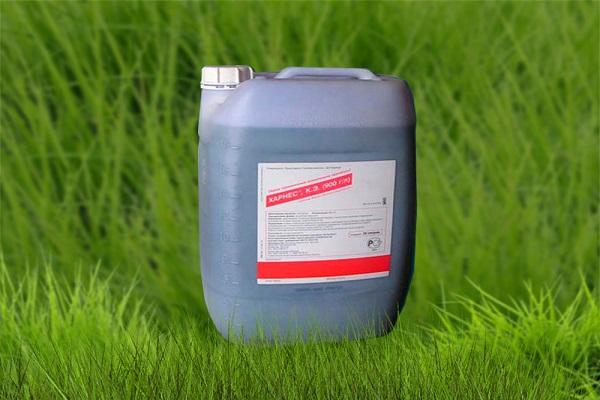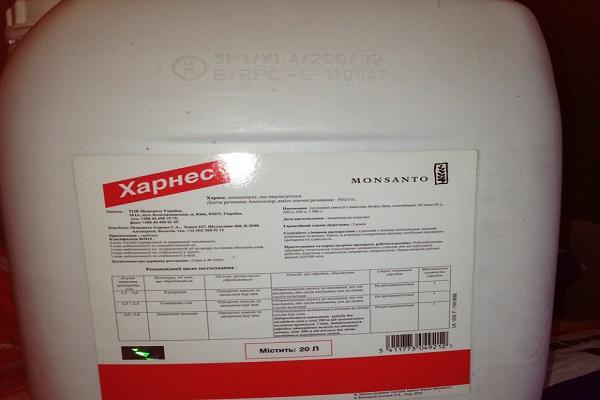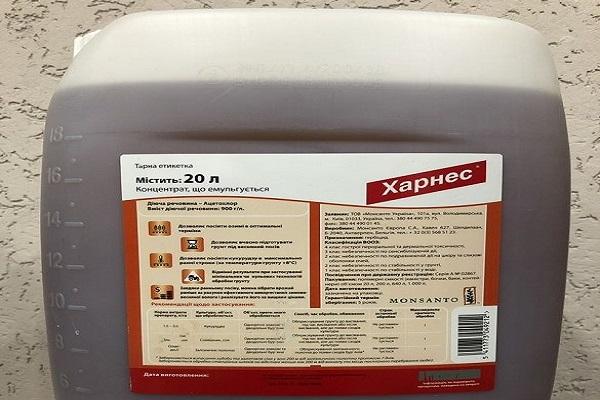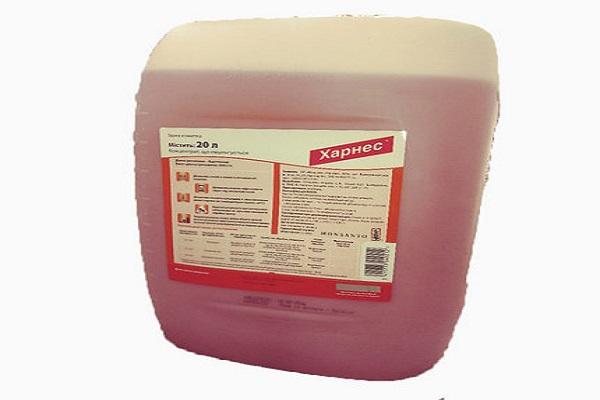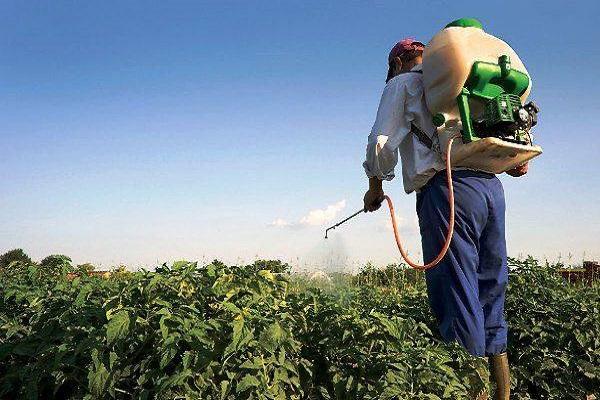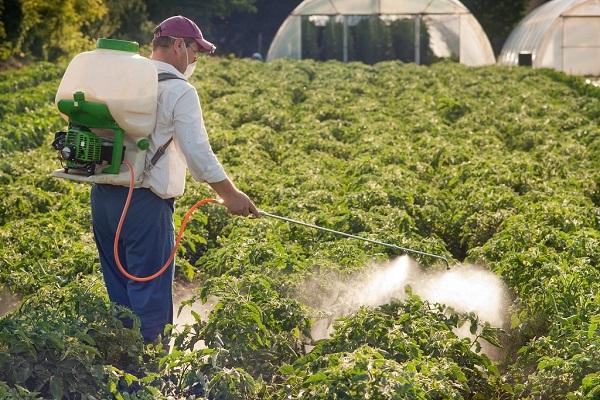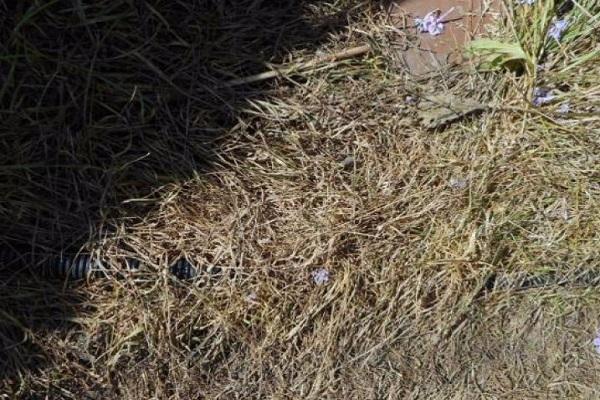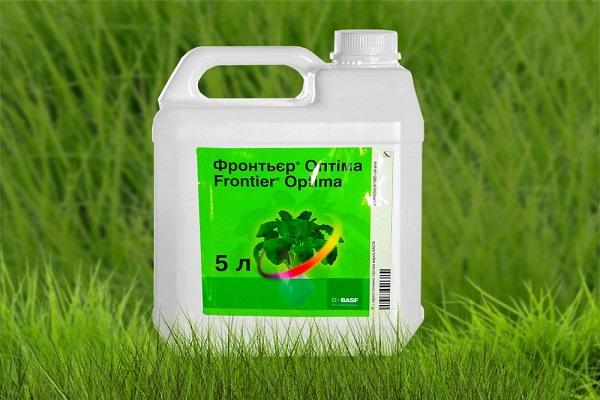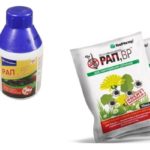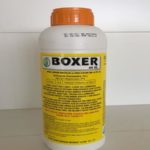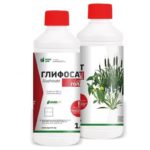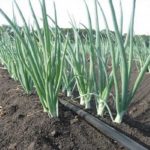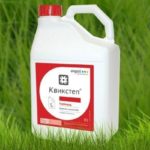The advantage of soil herbicides is the suppression of weeds at the germinal stage. This creates favorable conditions for the germination of cultivated plants, does not deprive them of useful substances, and allows full use of soil fertility. Harnes is a soil herbicide used to treat and protect soybean, corn and sunflower crops.
- Active ingredients, purpose and release form of the drug Harnes
- How does weed killer work?
- Period of protective action
- Impact speed
- Pros and cons of herbicide
- How to prepare a working mixture
- How to spray the drug correctly
- Safety precautions when working with herbicide
- Toxic properties
- Compatibility with other pesticides
- Storage periods and rules
- Existing analogues
Active ingredients, purpose and release form of the drug Harnes
The drug belongs to the group of chloroacetanilides, which are soil herbicides with selective action. The active ingredient is acetochlor at a concentration of 900 grams per liter.
Acetochlor effectively eliminates the most common types of weeds - cereals and dicotyledonous annuals. Protected plants:
- corn;
- soy;
- sunflower.
The product is available in the form of a concentrated emulsion, bottled in canisters with a capacity of 10 and 20 liters.
Please note: the marketing authorization for acetochlor has expired.
How does weed killer work?
The drug is applied to the soil, it is distributed in the surface layer. Its effect extends to plants sensitive to acetochlor at the germination stage. The substance is absorbed by the roots and seedlings of weeds. The effect on adult weeds is weak, so treatment must be done before germination.
Harnes inhibits protein metabolism, thereby blocking cell division. The growing season of seedlings stops, the weeds freeze in the embryonic state and die.
Obvious signs of the action of Harnes are the absence of germinating weeds, severely deformed, mutilated shoots, which, as soon as they appear, dry out.
Period of protective action
The effects of Harnes last for 10-12 weeks. During this time, crops grow stronger, their stems close, preventing weeds from germinating after the protective effect of the herbicide has completed.
An important condition for the full operation of Harnes is the presence of moisture in the soil, which helps to reveal all the properties of the herbicide.
Impact speed
The drug begins to act immediately, weed seedlings die within 3-7 days, do not appear on the surface or emerge damaged and dry out on the soil. The effect of the herbicide increases soil moisture, since the substance does not move well in the absence of water.
The effect of the herbicide lasts for 10-12 weeks.
Pros and cons of herbicide
The advantages of Harnes include:
- long term herbicidal action;
- destruction of weeds during the most important period of crop development - at the germination stage, when young crops are weak and seedlings are still rare;
- does not disrupt crop rotation;
- does not have a negative effect on the soil;
- eliminates the need for inter-row processing, that is, reduces costs;
- wide spectrum of herbicidal action - millet (species), bristle grass (species), crabgrass (species), others.
The drug completely decomposes in the soil during the season and does not sink into the lower layers. Harnes has a hazard class 2 for humans, which requires increased safety measures when preparing the solution and spraying the product.
Help: in high humidity and cold weather, the herbicide can negatively affect the protected crops - slow down growth, lead to deformation of shoots.
How to prepare a working mixture
Harnes is bred on concrete areas, wearing personal protective equipment. The herbicide is poured into a tank one-third filled with water while the hydraulic mixer is constantly running. After kneading and complete dissolution, the product is added with water.
The recommended volume of the finished solution is 200-300 liters per hectare.
How to spray the drug correctly
The herbicide is sprayed by ground method. The instructions for use oblige you to adhere to the following rules:
- without incorporation, Harnes is applied only if the soil is moist;
- time of application - before sowing, together with planting crops, before emergence;
- the drug is applied in an amount of 1.5-3 liters per hectare in a working solution volume of 200-300 liters;
- in case of overdried soils and no hope of precipitation, Harnes is covered with harrows or cultivators to a depth of 3-5 centimeters;
- When applied to dry soil, it is recommended to irrigate the fields within 1-3 days after spraying.
The maximum permissible amount of herbicide is applied:
- on heavy clay soils;
- if the soil contains a lot of humus (from 3%);
- with a lack of moisture and the impossibility of watering.
The herbicide should not be buried in the soil if there is enough moisture in the ground or the fields will be irrigated immediately after sowing.
It is allowed to use green mass or remove crops from fields 70 days after spraying the herbicide.
Safety precautions when working with herbicide
They work with the herbicide in a protective suit with a mask and goggles. Strictly follow the prescribed dosages. One-time processing of fields by Harnes per season is allowed only by ground means.
The working mixture is used during the day, the remainder is disposed of. Avoid contact of the substance with products and animals. Carry out protective measures for bees.
Toxic properties
Toxicity – class 2 for humans, class 3 for bees. Within 2-3 months, the herbicide completely decomposes in the soil. There is no danger to soil microorganisms, worms, or insects.
According to some data, there is a risk of carcinogenicity.
Compatibility with other pesticides
It is allowed to use the drug with other pesticides to remove all types of weeds from crops. Before pollination of fields, the composition is examined for toxicity.
Harnes is also used in a common solution with fertilizers. When spraying mixtures, the hydraulic mixer must be constantly running.
Storage periods and rules
In closed factory packaging, Harnes is stored for 36 months. Utility rooms for chemicals are used for storage.
Existing analogues
Exact analogues of the drug are the herbicides Kratos, Hortus, containing acetochlor in the same dosage.
Since the registration of acetochlor has not been extended, we present Harnes’ analogues for other substances of the chloroacetanilide group:
- dimethenamid-R – Checkpoint, Difront, Frontier Optima;
- S-metolachlor – Avangard, Metols, Gardo Gold, Stream;
- metazachlor - Butizan, Butizan Star, Nopasaran, Sultan.
When choosing analogues, the content of the active substance and the spectrum of activity of the product are taken into account.
Soil herbicides provide plant protection during germination, preventing weeds from pinching young crops and depriving them of nutrition. Harnes allows crops to rise, close rows, and allows you to get a high yield without harm to the fruit.

